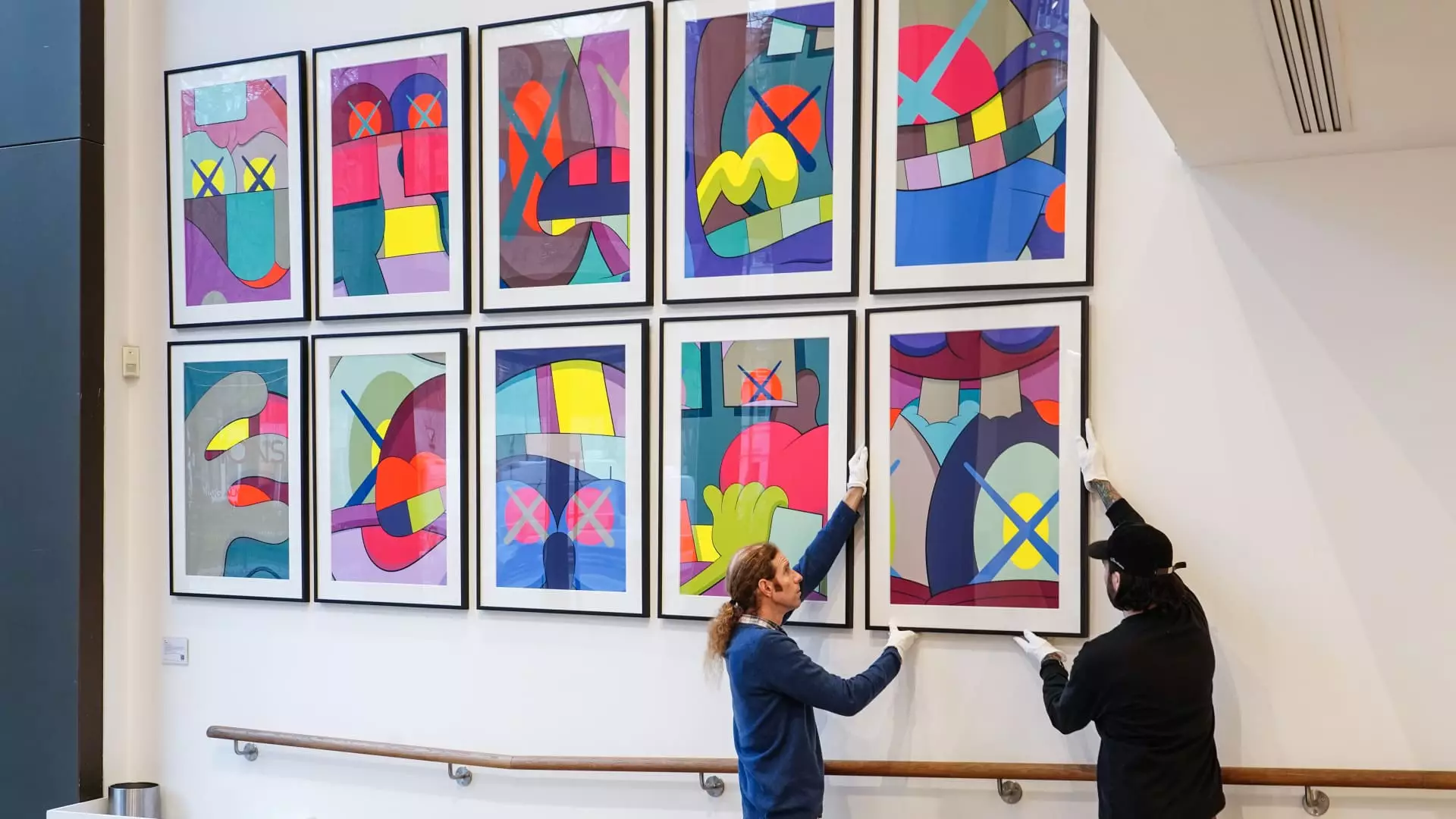In the corridors of high finance and luxury consumption, art has long stood as a symbol of refined taste and an enduring store of wealth. For decades, the art market thrived on the implicit promise that investments in masterworks and collectibles would yield lucrative returns, especially in times of economic stability. Yet, amid recent trends, this age-old assumption threatens to unravel. The decline in auction sales over multiple years signals more than a temporary slowdown; it exposes the fragile veneer of confidence that once elevated art to a safe haven status for the ultra-rich. It is increasingly evident that the very foundation supporting this market—its perceived correlation with personal wealth—is beginning to show cracks, begging us to question whether we are witnessing a transitory correction or a fundamental paradigm shift.
The Deception of Wealth and Artistic Value
At first glance, the soaring fortunes accumulated by the wealthy seem to validate their support of the arts. When the top 10% of Americans collectively added $37 trillion to their wealth in recent years, and stock markets soared well beyond pre-pandemic levels, it appeared only natural that art would thrive as a high-value asset. Notably, economic theory and historical data have long posited a close relationship between personal wealth and demand for rare, high-end art: the richer you are, the more likely you are to invest in cultural assets that confer social status or financial security. However, current data cast doubt on this assumption, revealing a disconnection between the wealth bubble and the shrinking sales figures at auction houses. These are not just momentary fluctuations—they undermine the notion that art prices are solely driven by wealth levels. Instead, they hint at a deeper structural misalignment, exposing the illusion that art prices are inherently an extension of economic prosperity.
The Shifting Tides of Generational Taste and Wealth Transmission
The culprit behind this divergence is not merely economic volatility, but a seismic cultural and generational transformation in the consumption of art. For the better part of four decades, baby boomers fueled the art market, accumulating significant collections during times of rising wealth and buoyant markets. Now, as they age, many are downsizing, liquidating portfolios, or leaving sizable estates that their heirs may not even desire—forgotten relics of a bygone era of taste and investment. Meanwhile, millennials and Generation Z, immersed in digital connectivity and alternative entertainment, are less inclined to view classic art as a priority. Their tastes gravitate towards experiential luxury, online collectibles, and affordable assets under $50,000, reshaping the demand landscape. This generational pivot signals more than a market fluctuation —it presages a potential structural transformation that may redefine valuation standards and investment strategies for the foreseeable future.
The Rise of Digital and Alternative Assets
As traditional art sales falter, the industry is scrambling to adapt—yet the solutions often seem superficial or insufficient. Auction houses now emphasize online sales, luxury accessories, and smaller-value collectibles that appeal to a younger, more diverse demographic. Jewelry, for instance, has seen a remarkable 68% increase in sales, largely driven by women, indicating a shift in the type of luxury objects that capture the zeitgeist. Online bidding platforms dominate, offering convenience and immediacy that resonate with digital natives. This pivot may temporarily buoy luxury sales but raises questions about sustainability. Are these shifts an organic evolution of consumer preferences or merely a tactical response to an underlying decline in core art market activity? The focus on lower-priced assets might also signal a broader relinquishing of faith in high-end art as a reliable store of wealth—potentially a harbinger of a profound shift in how wealth is stored, displayed, and appreciated.
The Conundrum of a Saturating Market and Rising Inequality
The current paradox is stark: wealth continues to accumulate at record rates, yet the traditional avenues for its expression through art are shrinking. The elite’s obsession with high-value masterpieces appears to be waning even as their wallets grow fatter. This disconnect underlines an uncomfortable truth about the inequality and social stratification characterizing contemporary society—where the manifestation of wealth is increasingly commodified in digital realms, luxury goods, and experiential offerings rather than through the purchase of enduring works of art. Such a transformation could profoundly alter the role of art as an investment, cultural artifact, and symbol of social standing.
The trajectory of the art market points toward an uncertain future, one that challenges its long-held assumptions. If the current decline continues, it could indicate a more profound cultural shift—one that questions the very foundations of value, taste, and wealth transmission. Will art remain a sanctuary for the privileged, or will it transform into a more democratized and digitally integrated sphere? Given the current trajectory, the latter seems increasingly plausible, but at the cost of traditional prestige and exclusivity. As the wealthy navigate an evolving landscape, they may find themselves increasingly estranged from the art world they once helped sustain. The next few years will reveal whether this is merely a correction or the beginning of a fundamental recalibration—that art, in its traditional form, is losing its grip on the collective imagination and, perhaps, on its status as a premier store of wealth.


Leave a Reply